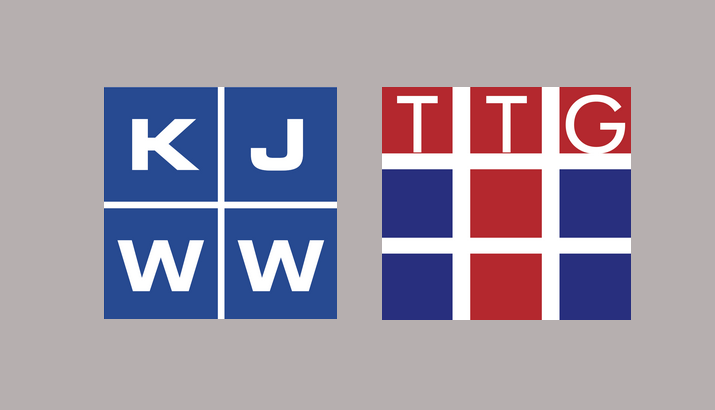Two of the nonresidential building industry’s leading engineering firms have joined forces to leverage their similar sizes and market strategies.
KJWW Engineering, based in Rock Island, Ill., and TTG Engineers, based in Pasadena, Calif., will continue to operate under their own banners, but within a newly created holding company with common management.
Ranked 11th and 14th, respectively, on BD+C’s 2014 Engineering Giants list, the firms’ combined revenues last year would have elevated them to No. 4.
The merger unites two companies with a combined 860 employees working in 25 national and five international locations. “The merger gives TTG and KJWW a larger presence throughout the U.S. and strengthens our collective dominance in the healthcare, higher education, government, entertainment, industrial, and transportation markets,” said Zareh Astrouian, PE, SE, president of TTG. Paul VanDuyne, PE, KJWW’s president, added that the merger “allows us to build on those strengths with greater geographic mobility.”
In an interview with BD+C, VanDuyne—who will be CEO of the holding company, with Astrouian its chairman— said the two firms would spend the next 15 months integrating their operational infrastructure, such as accounting, IT, etc. Over that period, the companies will keep their engineering teams intact, while integrating similar practices. VanDuyne was quick to note that the merger is not a prelude to staff reductions. “Human capital is at such a premium right now, and we would be very happy to go through this process without losing a single person.”
VanDuyne believed this merger would allow both companies to serve national end-user clients more effectively. TTG should gain from KJWW’s strengths in such areas as medical equipment planning and architectural lighting, while KJWW should benefit from TTG’s expertise in the entertainment sector. “We feel this is a great opportunity to take a look at a brand new organization. That’s a little bit extraordinary for two $50 million companies,” he said.
The firms’ executives have been discussing this merger for about a year, said VanDuyne. “It started with a phone call about getting together. We met at [KJWW’s] offices in Chicago, and it went on from there.”
KJWW and TTG announced their merger less than a month after Thornton Tomasetti merged with Weidlinger Associates. While VanDuyne didn’t think these events necessarily presaged more consolidation among engineering companies, he did note that “scale” is becoming more important for firms to be relevant to clients in such areas as BIM and sustainability.
It hasn’t been determined whether the firms would eventually operate out of a single headquarters. That seems unlikely, at least in the near future, especially when Van Duyne said “I don’t think this is the last time you’re going to hear from us about expanding across the country.”
Related Stories
| Jan 13, 2014
6 legislative actions to ignite the construction economy
The American Institute of Architects announced its “punch list” for Congress that, if completed, will ignite the construction economy by spurring much needed improvements in energy efficiency, infrastructure, and resiliency, and create jobs for small business.
| Jan 12, 2014
CES showcases innovations: Can any of these help you do your job better?
The Consumer Electronics Show took place this past week in Las Vegas. Known for launching new products and technologies, many of the products showcased there set the bar for future innovators. The show also signals trends to watch in technology applicable to the design and building industry.
| Jan 12, 2014
The ‘fuzz factor’ in engineering: when continuous improvement is neither
The biggest threat to human life in a building isn’t the potential of natural disasters, but the threat of human error. I believe it’s a reality that increases in probability every time a code or standard change is proposed.
| Jan 12, 2014
5 ways virtual modeling can improve facilities management
Improved space management, streamlined maintenance, and economical retrofits are among the ways building owners and facility managers can benefit from building information modeling.
| Jan 11, 2014
Getting to net-zero energy with brick masonry construction [AIA course]
When targeting net-zero energy performance, AEC professionals are advised to tackle energy demand first. This AIA course covers brick masonry's role in reducing energy consumption in buildings.
| Jan 10, 2014
What the states should do to prevent more school shootings
To tell the truth, I didn’t want to write about the terrible events of December 14, 2012, when 20 children and six adults were gunned down at Sandy Hook Elementary School in Newtown, Conn. I figured other media would provide ample coverage, and anything we did would look cheap or inappropriate. But two things turned me around.
| Jan 10, 2014
Special Report: K-12 school security in the wake of Sandy Hook
BD+C's exclusive five-part report on K-12 school security offers proven design advice, technology recommendations, and thoughtful commentary on how Building Teams can help school districts prevent, or at least mitigate, a Sandy Hook on their turf.
| Jan 10, 2014
Resiliency, material health among top AEC focuses for 2014: Perkins+Will survey
Architectural giant Perkins+Will recently surveyed its staff of 1,500 design pros to forcast hot trends in the AEC field for 2014. The resulting Design + Insights Survey reflects a global perspective.
| Jan 9, 2014
How security in schools applies to other building types
Many of the principles and concepts described in our Special Report on K-12 security also apply to other building types and markets.
| Jan 9, 2014
16 recommendations on security technology to take to your K-12 clients
From facial recognition cameras to IP-based door hardware, here are key technology-related considerations you should discuss with your school district clients.

















